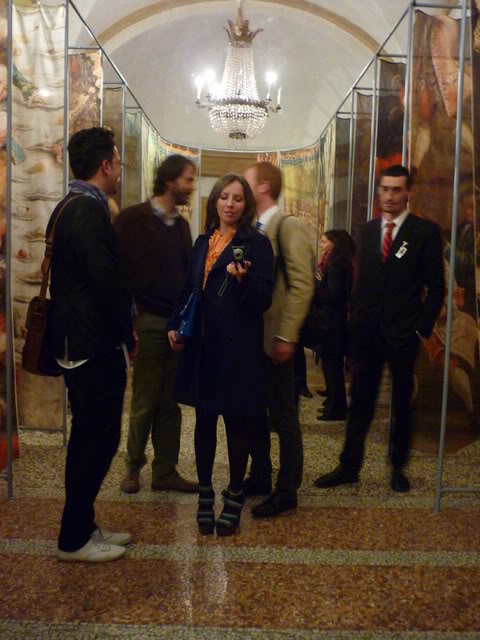 Given that I’m a Classics PhD student, I spend an awful lot of time reading obscure texts, written in a language that no one even speaks by men most people have never heard of. Which is something of a shame as much of what these dead chaps wrote is rather splendid and though I’m loathe to say so, still relevant today.*
Given that I’m a Classics PhD student, I spend an awful lot of time reading obscure texts, written in a language that no one even speaks by men most people have never heard of. Which is something of a shame as much of what these dead chaps wrote is rather splendid and though I’m loathe to say so, still relevant today.*
My thesis deals primarily with one text – Lucan’s Pharsalia – an epic poem written in the first century under Nero (you remember, he played the fiddle while Rome burned) which looks back on the last days of the Roman Republic. This ain’t Homer or Virgil – there’s no dawn and her rosy red fingers here. Lucan’s Erichtho makes Homer’s Polyphemus [the Cyclops] look like the BFG, and his grotesque descriptions of battle are entirely devoid of the traditional conventions of honour and glory normally found in epic. It’s a no-holds-barred gory, raging tantrum of a text, which positively bemoans the previously unimaginable fall of the Roman Republic.
One of the things I most love about Lucan’s epic is that, as expected, he rails against the leaders of the civil war – Caesar and Pompey – but his purest expressions of loathing are reserved for the Roman people.

When Caesar enters Rome for the first time, Lucan writes beautifully of how the people are so terrified of what Caesar might do that they are prepared to do whatever he wants:
“So he speaks and enters a Rome thunderstruck by terror, because they believe that he will sack the walls with black fires and scatter the gods, as if he had captured Rome. This was the extent of their fear: they equate his wishes with his power. No favourable greetings, no feigned cries of happy uproar do they pretend; hardly have they room for hatred. The Palatine halls of Phoebus [i.e. the Temple of Apollo] are filled by a crowd of Fathers brought out from their lairs, though no one has the right to summon the Senate; the sacred chairs were not resplendent with the consul, no praetor – by law the next in rank – is present, and the empty curule chairs are missing from their place. Caesar was everything: the Senate-House listened to one man’s voice. The Fathers sat, prepared to vote in favour if he asks for tyranny, for temples for himself, for the slaughter and the exile of the Senate. Thank the gods his sense of shame exceeded Rome’s self-degradation.”
This is what I mean about the contemporary relevance of the ancient texts. This passage reminds me all too well of the fear-mongering that goes on in my own terrified country: the war on terror, anthrax, communists – you name it – if the politicians and the media are able to whip up enough fear, people are all too willing to give up their civil rights.
Lucan delivers a stinging reprimand against the people for such cowardly behaviour and, as the ultimate dressing-down, suggests that ultimately the people of Rome are to blame for their own downfall. Something we’d all do well to remember, especially comparing, say the difference in cost v public anger over the MP expenses scandal with the banks bailout. MPs were paid just over £93 million in expenses in 2007-08 [the most recent total figures I could find] whereas the bank bailout was £28.7 billion – more than five times the cost of annual military operations in Afghanistan and Iraq. But which do you think most twisted the britches of the general public? Not the bank bailout, which hardly merited so much as a sip of tea being spat out the nose, but the MP expenses ‘scandal’ which has hardly been out of the press since the story broke over the summer. Frankly, I don’t have a problem with MPs claiming for expenses (though I’m less happy about them claiming excessively, obviously) – in theory, these people are public servants (again, I might not be that enchanted by the behaviour of the current lot, but I agree with the position in principle) and it’s their job to look after the health of the country. £93 million over one year is not really that much money. £28.7 billion pounds is, however, A LOT of money. That taxpayer money went to bail out organisations with zero interest in the public welfare is absolutely mind-boggling. That the people of this country were ready to draw and quarter their MPs for a few thousand pounds worth of expenses and yet raised little more than an eyebrow when these same MPs gave shed-loads of taxpayer money to bail out the banking sector is just incomprehensible.

As Lucan says of the Romans, it’s not enough to blame the sender of the message when the recipient is equally culpable. Like Caesar and Pompey, some of our civil leaders may be dirty bastards, but who lets them get away with it?
*Loathe to say so as there exists a breed of classicist who feels the need to belittle our subject matter by constantly undermining it in ‘justifying the contemporary relevance of the ancient texts for the modern world’. We’re academics interested in knowledge, not in increasing profit margins, I don’t understand why there’s any need to forge bonds of contemporary relevance. That they exist is both happy coincidence and proof of the extraordinary nature of the quality of the writing and the subject matter of the texts.















































